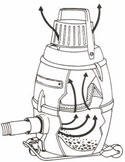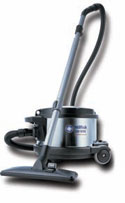As of today (4/22/10) a sweeping set of regulations governing the removal of lead paint from the workplace becomes effective. It is known as the Renovation, Repair and Painting or the RRP rule and it affects work done on all structures built before 1978.
The following three websites will give you all you need to know about the RRP rule. The 10 most important questions site is a quick review of the RRP rule and should be read first.
The EPA site has the most comprehensive overview of the RRP rule and the EPA PowerPoint presentation on the RRP rule is an easy to understand summary of the RRP rule in a PowerPoint format.
The 10 most important questions and Answers about the RRP Rule
http://www.wondermakers.com/LinkClick.aspx?fileticket=-u44UnT3sDE%3D&tabid=71
US Government EPA web site in the RRP Rule
http://www.epa.gov/lead/pubs/renovation.htm
EPA PowerPoint presentation on the RRP Rule
http://www.epa.gov/region6/6dra/oejta/schools-seminar/rrp_presentation_tribalschools.pdf
At Dust Collection Products, we have been dealing with toxic dusts for over 19 years and we are very familiar with the problems and the solutions associated with toxic dust removal.
Please call us for personalized technical assistance for all your RRP rule, OSHA and EPA toxic dust compliance needs.
LEAD RRP Quick Fact Sheet
Do you remodel or renovate homes built before 1978?
On April 22, 2010, the Environmental Protection Agency’s Lead RRP (40 CFR, Part 745, Subpart E) will go into effect. The new rule requires contractors performing renovation, repair and painting projects that disturb lead-based paint in homes, child care facilities, and schools built before 1978 to be certified and follow specific work practices to prevent lead contamination. Among these required work practices are the use of a HEPA-filtered vacuum cleaner, to minimize dust and thoroughly clean the work area.
According to the RRP rule:
- Walls must be cleaned starting at the ceiling and working down to the floor by either vacuuming with a HEPA vacuum or wiping with a damp cloth.
- Remaining surfaces are to be cleaned by thoroughly vacuuming all remaining surfaces and objects in the work area, including furniture and fixtures, with a HEPA vacuum. The HEPA vacuum must be equipped with a beater bar when vacuuming carpets and rugs.
- The use of machines that remove lead-based paint through high speed operation such as sanding, grinding, power planing, needle gun, abrasive blasting, or sandblasting, is prohibited unless such machinesare used with HEPA exhaust control.

So, what does the EPA mean by a HEPA vacuum cleaner? In 40 CFR 745.83, the EPA states:
“HEPA vacuum means a vacuum cleaner which has been designed with a high efficiency particulate air (HEPA) filter as the last filtration stage. A HEPA filter is a filter that is capable of capturing particles of 0.3 microns with 99.97% efficiency. The vacuum cleaner must be designed so that all the air drawn into the machine is expelled through the HEPA filter with none of the air leaking past it.”
Frequently Asked Questions

Q. What is the EPA’s Lead RRP and when does it go into effect?
A. Common renovation activities like sanding, cutting, and demolition can create hazardous lead dust and chips by disturbing lead-based paint, which can be harmful to adults and children. To protect against this risk, the EPA issued a rule on April 22, 2008, requiring the use of lead-safe practices and other actions aimed at preventing lead poisoning. Under the rule, beginning on April 22, 2010, contractors performing renovation, repair and painting projects that disturb lead-based paint in homes, child care facilities, and schools built before 1978 must be certified and must follow specific work practices to prevent lead contamination.
Q. What are the penalties for not complying with the Lead RRP?
A. Besides a private lawsuit by the homeowner, fines for not complying with the RRP can run upwards of $32,500 per violation, per day. (Source: Small Entity Compliance Guide to Renovate Right)
Q. I’m a contractor. How do I get certified?
A. To find your nearest EPA-accredited training provider, visit: http://cfpub.epa.gov/flpp/searchrrp_training.htm
Q. I’m a home owner/landlord/property manger. How do I know if my contractor is certified?
A. To find your nearest EPA certified firm, visit: http://cfpub.epa.gov/flpp/searchrrp_firm.htm
Q. Nilfisk has a comprehensive line of industrial vacuums. What ones would you recommend for lead abatement?
A. The following vacuums are our most popular for lead abatement; each one exceeds the requirements for safely collecting lead debris as outlined in the RRP.

- Nilfisk GD 10 Back
- Nilfisk RRP Vacuum / Nilfisk GD 930
- Nilfisk UZ 934
- Nilfisk GM 80 and 80i
- Nilfisk Eliminator I
- Nilfisk Eliminator II
- Nilfisk CFM 118 (HEPA filter model available)
Q. What is the difference between Nilfisk’s turbo nozzle and power nozzle?
A. Both the turbo nozzle and power nozzle are carpet cleaning tools equipped with a rotating beater bar that connect to the vacuum’s hose. The turbo nozzle uses the working air of the vacuum to spin the beaterbar, while the power nozzle’s beater bar is driven by electricity. Both are extremely effective in agitating the carpet to collect heavy lead debris which may have settled in the fibers.
A 32 mm turbo nozzle (part # 56649625) is available as an accessory on these machines:
Nilfisk UZ 934
Nilfisk GD 10 Back
Nilfisk RRP Vacuum / Nilfisk GD 930
A 38 mm turbo nozzle (part # 01719415) is available as an accessory on these machines:
Nilfisk Eliminator I
Nilfisk Eliminator II
Nilfisk CFM 118 (additional accessories required)
The electrified power nozzle is available as an accessory on these machines (part numbers differ, ask our customer service agents or your local dealer for more information):
Nilfisk RRP Vacuum / Nilfisk GD 930
Nilfisk GM 80
Q. Can I use my shop-style vacuum to collect lead debris?
A. According to the EPA’s website, “renovation firms should look for a vacuum cleaner that was designed to be operated with a HEPA filter, rather than a shop vacuum that can be fitted with a HEPA filter in placeof the original basic filter.”
Resources
EPA’s Lead RRP:
http://www.epa.gov/lead/pubs/renovation.htm
Lead Safe Online Training Institute:
https://leadsafeonline.complyability.com/LeadSafe/login.aspx
To learn more about Nilfisk HEPA-filtered vacuums for the Lead RRP, visit www.nilfiskcfm.com or call 1-800-645-3475.
Nilfisk Lead RRP Vacuums
Nilfisk HEPA vacuum cleaners exceed the EPA’s definition of a HEPA vacuum and are equipped to safely collect hazardous lead dust generated during renovations.
- Equipped with multi-stage filtration, including a tested and certified HEPA filter, Nilfisk HEPA vacuums safely capture 99.97% of debris, down to and including 0.3 microns.
- Nilfisk HEPA vacuums for lead abatement can be equipped with optional turbo and/or power nozzles. These are floor tools equipped with a carpet beater bar to dislodge heavy lead particulate that may be embedded in the carpet. For more information on these nozzle options, please see our FAQs on the next page.
- Nilfisk HEPA vacuums can be used in conjunction with vacuum-assisted power tools to collect hazardous lead debris at the source.
Note: The EPA does NOT recommend or certify any manufacturers’ vacuums.
We carry a complete line of HEPA certified vacuums from one of the best vacuum manufacturers in the world. Nilfisk is a Danish company that produces the highest quality vacuums available. Their vacuums come with a 2-year warranty. They range from backpack style vacuums with an incredible 144CFM and 99” of static lift to multi station vacuums capable of handling up to five grinders at one time.

